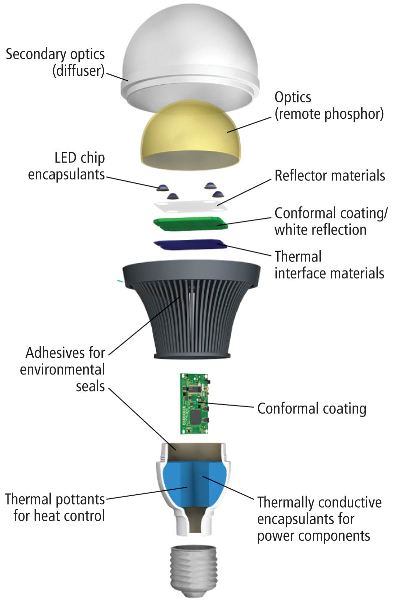
The LED lighting industry is quite dynamic and evolving fast, with the fast advancement in the technology. The evolving industry also witness fast changing trends, and has a complex supply chain for manufacturing LED lighting products, which is quite hard to mange.
In the LED lighting industry, management of the supply chain plays a crucial role. Asupply chain that is managed effectively can increase the efficiency of the production process, which , in turn will reduce lead time. The ever shortening product life cycle combine with long lead time are really challenging for the manufacturer.
LED lighting manufacturer have, therefore, realised that it is essential to follow certain best practices to manage the supply chain effectively. It is a known fact that the shorter the lead time, it will be less difficult to manage the inventory.
Challenge of a complex supply chain
In the LED lighting industry that is primarily driven by fast changing technology, manufacturers need to understand that the shelf of a product can be as short as a few months, which means, in less than a year a product may totally vanish from the market. There is always the risk of low service levels, high inventories and high obsolescence . According to industry experts, many important changes are required in the supply chain processes in order to manage it effectively. As a result, it is important to keep in mind that the time line foe developing new products, the time line for investments and the volume of products.
In the conservative LED lighting era, traditional and non-integrated supply china coordination between suppliers and manufacturers was sufficient to enable high quality services and effective management of inventories throughout the entire value chain. But with complex products, challenges of the supply chain have increased.
LEDs manugfacturing is a capital-intense semiconductor proces and have long lead time, even as long as 12 weeks or more. The production yield is also uncertain due to the fast changing LED technology.
Manufacturers are combining long lead times with short products life cycles which make management of the supply chain more effective.
Industry experts believe that some best practices need to be followed for effective supply chain management in the LED industry.
Standardization
The LED industry in the India is now waking up to the necessity of standardization. Standard specifications are being developed for electrical, mechanical, optical and thermal interfaces of LED light. Standards will make life easier foe all the stakeholders of the supply chain.
Regional production
By regional production, manufacturers can reduce lead time by almost 50%, increase supply flexibility, and reduce inventories significantly.
Stocking policy
Today, stocking is a major concern in supply chain management, s with technology evolving fast, components that are in stock today many be obsolete in a few months. Manufacturers, therefore, need to keep minimum stocking and identify local sources that can supply high quality components at competitive prices. A certain portion of the total stock is reserved for covering the demand during lead time. Therefore, decreasing lead time is the right lever to cut inventories. The second portion of the inventory is reserved for the safety stock, the safety stock is a function of the service level, the demand uncertainty, the replenishment lead-time and the lead time uncertainty.
Authorised dealers
Authorised dealers and distributors are highly recommended for supply of components and materials. Many cheap quality components are available in the market, hence, one needs to be careful about the authenticity of the components supplied. Components that play a major role in the quality of LED lighting products should be products should be producted from reliable suppliers.
While concluding, we can say that component suppliers and manufactures have to have effective control over the supply chain, and also have an increased level of cooperation between them as well as an intensive relationship.
The real challenge is to manage the uncertainties in the supply chain timely and strategically. Balancing the activities in the supply chain is the main goal to achieve the necessary balance between cost and high quality products.